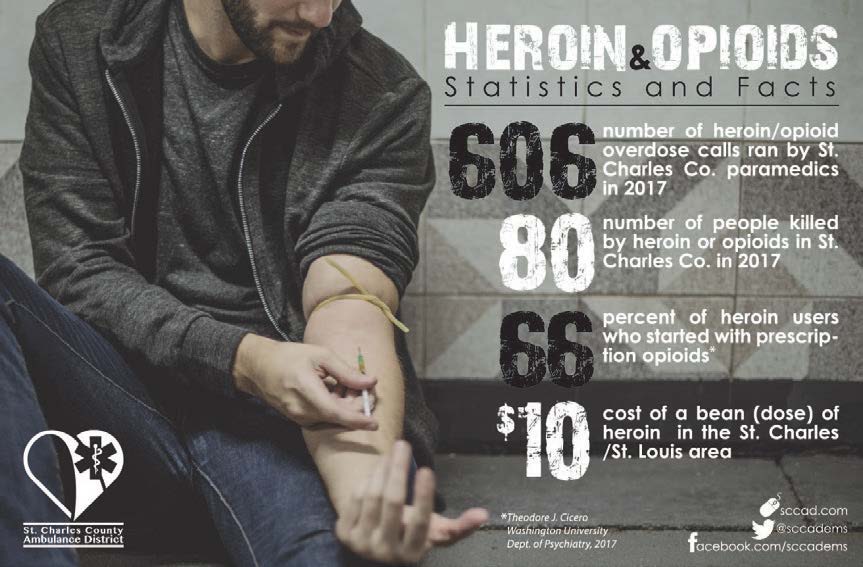
The St. Charles County Ambulance District developed an opioid response program after the county experienced a shocking increase in overdoses over the past three years.
The opioid epidemic has created a swath of destruction across the country—leaving behind ruined lives and broken families. The impact on first responders has been immense, changing the landscape for emergency calls and the dynamics of care in almost every community in the nation. In an effort to curb the problem, many—perhaps even hundreds—of programs have been created by EMS providers to try to reduce the number of overdoses that communities are plagued with. Here’s the story of one such EMS provider and agency.
St. Charles County Ambulance District is located in the St. Louis, Mo., metropolitan area. Paramedic Lisa Cassidy explains that the agency got involved in developing an opioid response program after a simple—yet serious—observation: more overdoses. “We were shocked to see the marked increase in opioid overdoses in the last three years. These overdoses were happening in every municipality in our county, and across all socioeconomic levels,” says Cassidy.
Cassidy, who was named 2017 Paramedic of the Year by the Missouri Emergency Medical Services Association, felt a personal calling to take action and get involved in any way she could. Today, she is instrumental in the county’s drug task force as well as an education program called #StopHeroin. Cassidy also coordinates access to a treatment component called SURRT, which stands for Substance Use Response and Recovery Team.
The role of SURRT within Cassidy’s EMS agency is to, first and foremost, get overdose patients into treatment. They start by treating substance abusers like they would every other patient. They care for them like other patients and engage them in conversation. When an overdose occurs, the involvement with the task force begins immediately, and it starts with a conversation.
“At the time of an overdose, if our crews are able to successfully revive someone, they immediately begin a conversation about our team assisting them with treatment options,” she says.
Humanizing and sympathizing with patients is a big focus. “The overwhelming challenge is EMS eradicating stigma surrounding patients who are substance users,” says Cassidy.
“When we were starting our SURRT program, we realized that for it to work, we had to have everyone on board, because it’s our crews that have the first interaction with the patient,” explains Cassidy.
Support from management, mental health instruction and in-depth training on substance abuse has given all the EMS crew members the education and the mindset they need to treat addiction as a disease. “EMS providers traditionally do not receive very much mental health training,” Cassidy says. “This additional knowledge made a huge difference at all levels in our department.”
Not only is Cassidy dedicated to having conversations with overdose survivors, she has also spent countless hours trying to prevent problems before they start—by conducting drug education for youth and adults. She has spoken to more than 5,000 citizens throughout St. Charles County and beyond, giving people a glimpse at what transpires during an overdose call, and showing a raw, powerful video to illustrate her point.
“There are so many more things that EMS providers can do for their communities besides just day-to-day calls, and there are a lot of agencies across the country venturing out into this new territory,” says Cassidy. “We should be in the business of helping to prevent calls, as well as assisting people afterward when possible. Going Beyond the Call should be the norm, not the exception,” she says.
When she steps back and reflects on her job, Cassidy says, “A career in emergency medicine is an ever-changing, emotional, sometimes rewarding job. It takes someone who can self-motivate, and be motivational at the same time,” she says. “It takes strength, and talent, but also mercy and compassion. And it takes going Beyond the Call, if you want to have a healthy, informed and educated community.”
For Cassidy, the EMS life is a rewarding one. “Seeing people be revived, be reunited with their family, bring life into this world, or seeing someone get a second chance to make a better life is what makes this job the best job on earth,” she says. “The good days definitely outweigh the bad ones.”



